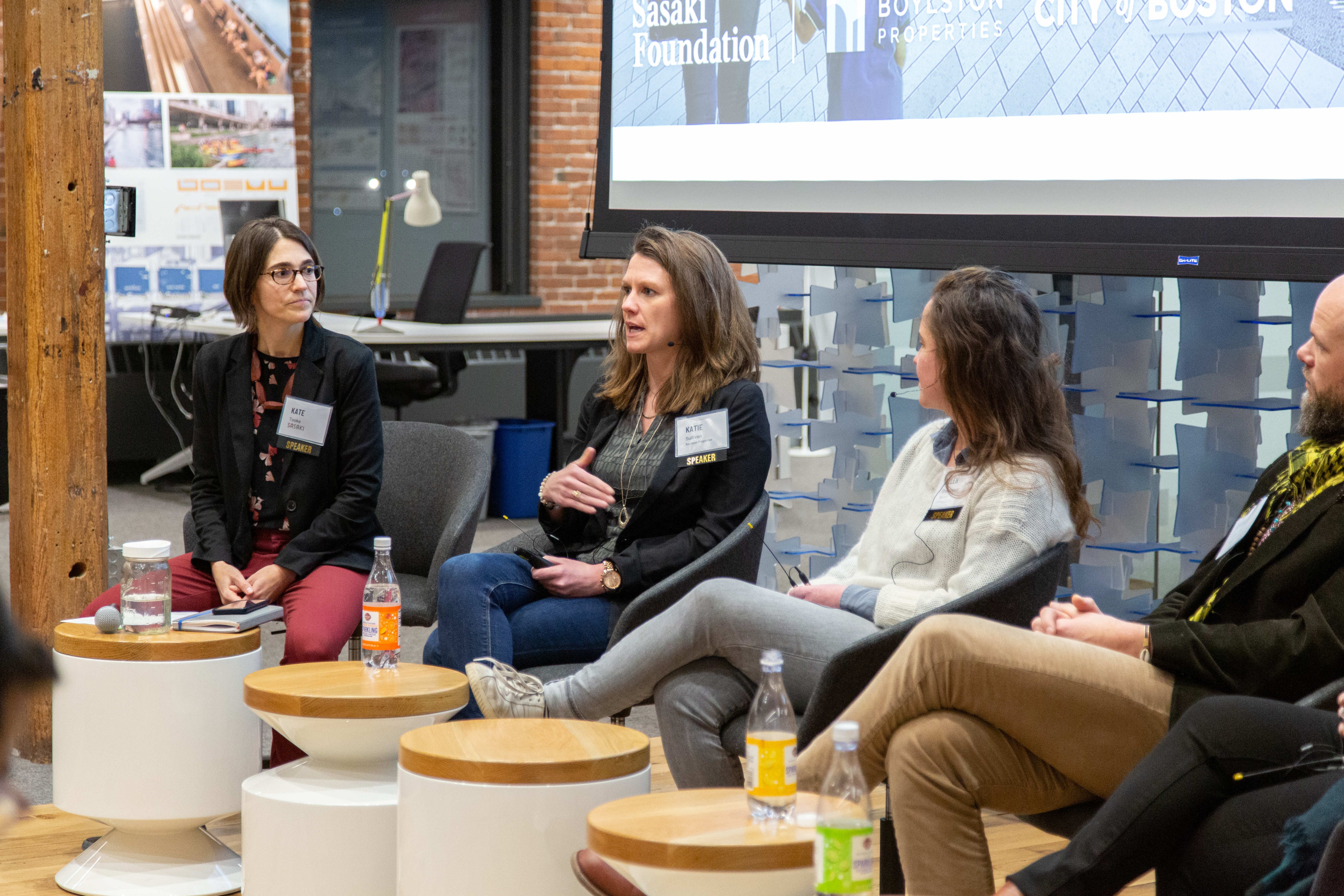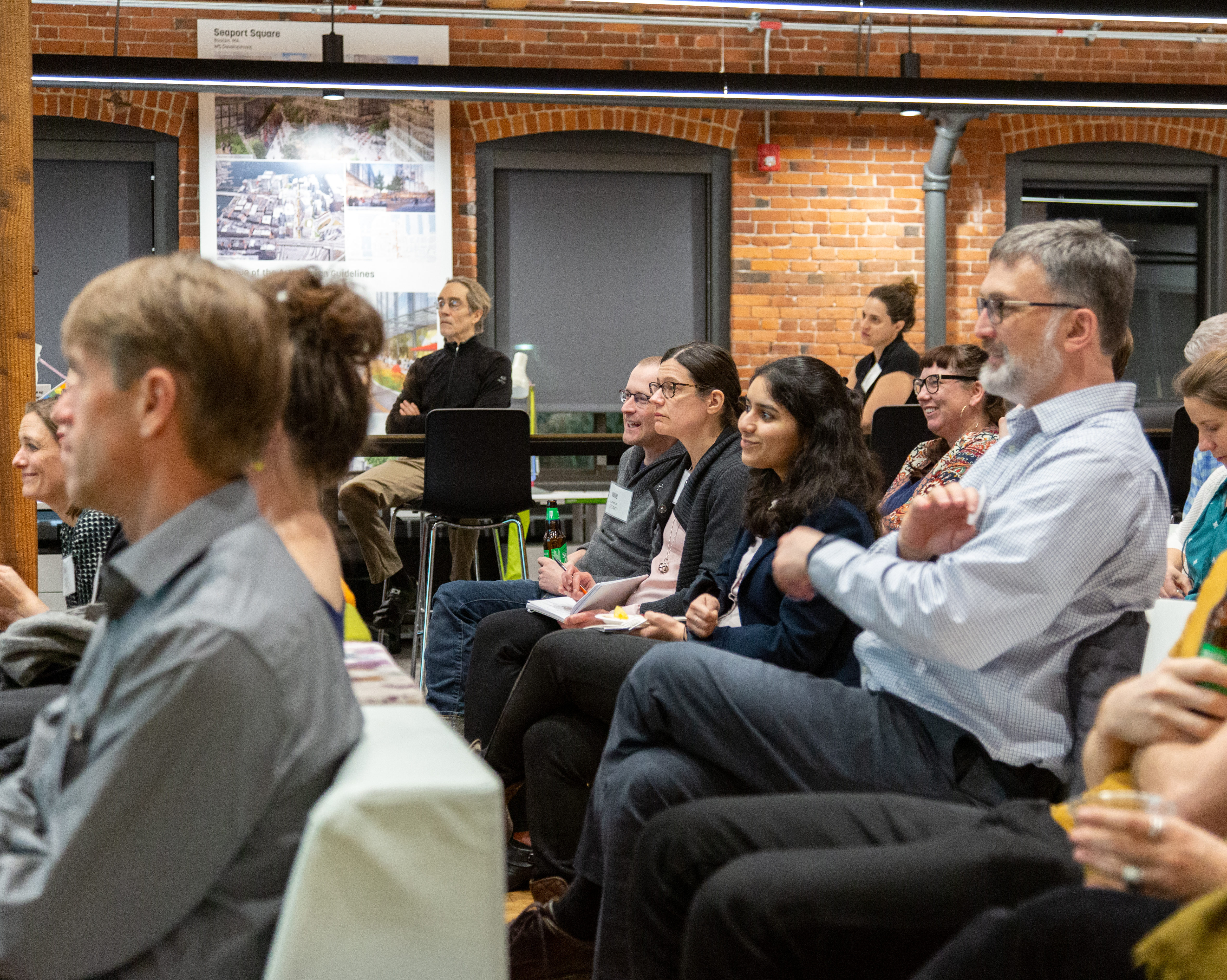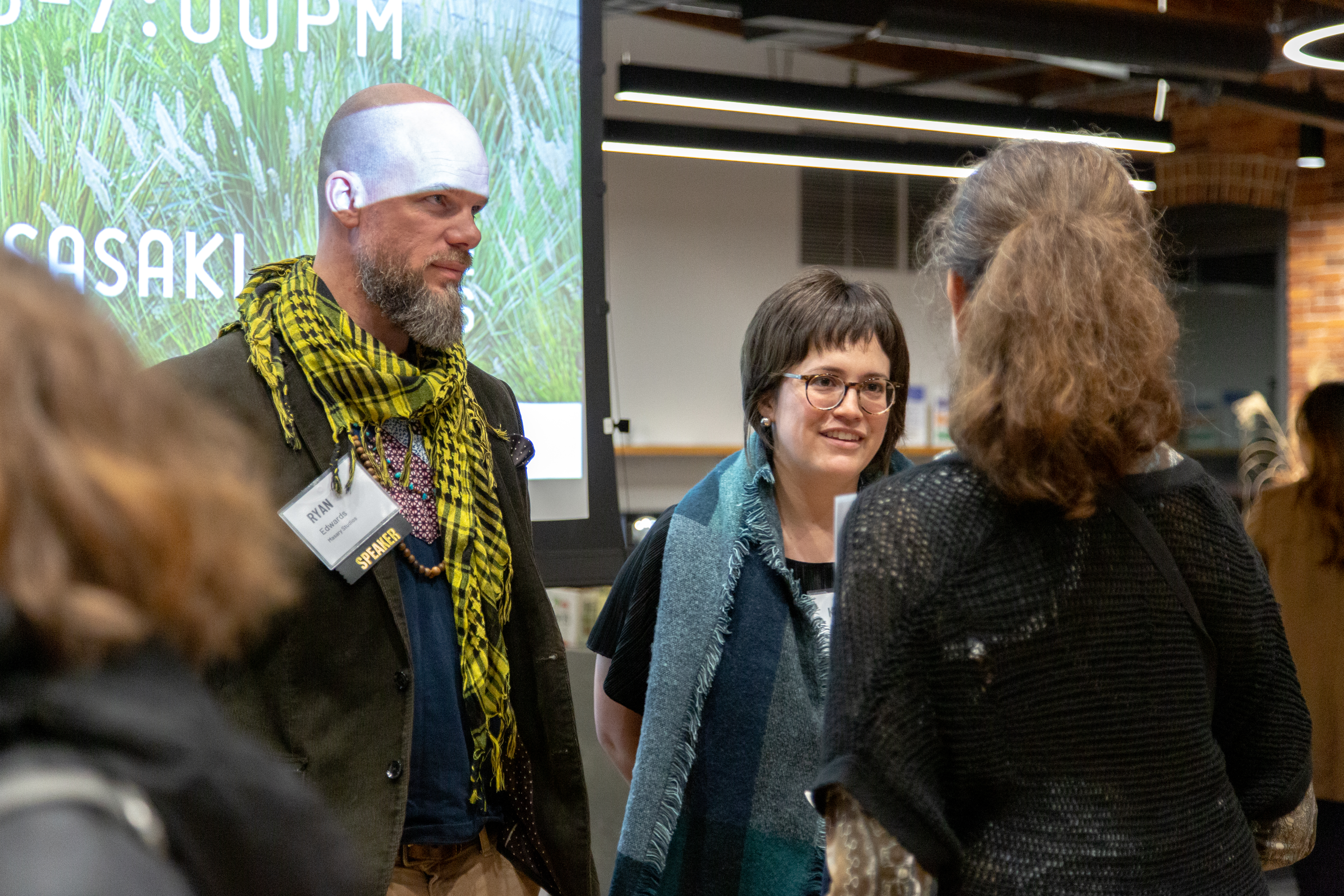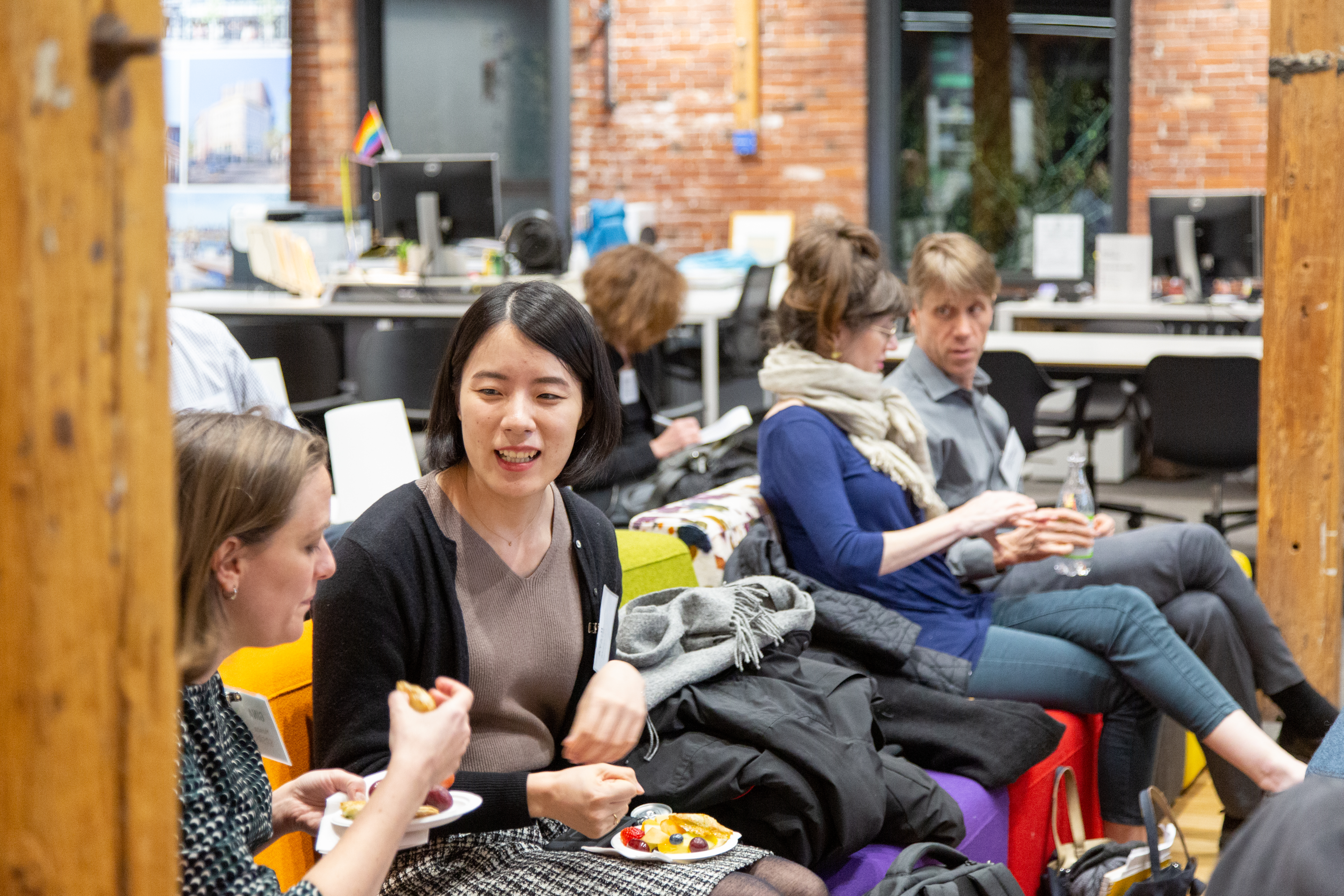The public realm is composed of streets, plazas, parks, green spaces, and other outdoor spaces that belong to everyone. It should be accessible to all, provide opportunities to engage in activities, and should be a space where people want to be. People of all backgrounds who have different perspectives and experiences can come together and have a shared experience, which has the potential to further activate these spaces going forward.
Earlier this week, the Sasaki Foundation hosted a conversation in the Incubator at Sasaki on activating the public realm. The panel explored how different components of a public space—art installations, programming, the natural environment, and more—can shape positive experiences.
Moderator Kate Tooke, landscape architect and associate principal at Sasaki, kicked off the discussion by posing a question to the panel about what they would tell designers, and those who have a say in designing and crafting public spaces, about what works, what does not, and what can individuals be thinking about when designing and crafting a new public space or revitalizing an existing public space.
Ryan Edwards, co-founder and principal at MASARY Studios, mentioned that flexible infrastructure points would be ideal when designing a public space, especially when it comes to dealing with the unknown in regards to programs and installations. He and his team, and many others, spend a lot of time bringing in generators, trying to access data networks that are crucial for a smooth-running operation, and going through permitting, so having access to power and data networks would allow for much more flexibility when activating a space.
What exactly is the unknown then, and how do we plan for it?
Ryan went on to provide an interesting example. “Fifty years ago, a city had to have a great ballet to make it a city where young people would want to go and where people would think of it as a proper city. Today, many programs and installations are around light and sound.” So, what’s next?

Panelists, from left to right: Kate Tooke, Katie Sullivan, Ellen Shakespear,

Audience, Activating the Public Realm.
That’s where we turn to curators and creators like panelist Ellen Shakespear, co-founder at Space Us, a platform that she and co-founder Stephanie Lee are building that brings ideas, art, and events to life in vacant and underutilized spaces.
“We’re always listening,” Ellen describes. “We always go into conversations with an open mind and also ask folks for early ideas about what they’re thinking.” She mentioned that it’s often preferable for her and her team to have a short description of an idea that someone has when they’re looking to bring an idea to life, so collectively they can workshop something together to fit a specific site or scenario.
Katie Sullivan, Director of Marketing at Boylston Properties, touched on the advantage of having temporary activations in a space and how those activations can adhere to a variety of uses as well as appeal to people of all ages and backgrounds. “Right now, we’re in the process of designing a lot of our public spaces, and we’re keeping in mind how we can afford ourselves to be seasonal and temporary in our activations. We decided to opt out of some planned fixed structures and leave the space more open. We’re also always thinking about accessibility, functionality, and usability. If we’re designing a space where people can sit and eat lunch, or have a coffee, is it a place where we would sit and eat lunch or have a coffee?”
Katie and her team are working on developing Arsenal Yards, a mixed-use destination in the heart of Watertown’s East End. The vibrant urban neighborhood will span more than one million square feet, including shops, a cinema, office and lab space, 300 contemporary residences, a 150-room hotel, a fitness collection, and a revitalized Arsenal Park with expanded access to the Charles River.
Another question Kate proposed was about how to think about a neighborhood’s or community’s architectural and cultural history and bring that history into this century with activations that meet the needs of urban dwellers. What’s the balance between those two perspectives and how do you navigate that?
Katie and her team are not only embracing history themselves as a company, but encouraging retailers to embrace history as well. The team urged the cinema at Arsenal Yards to keep the ceiling open in a certain area to expose a gantry crane from WWI that used to carry tanks and other items used by the army. Now, it’s part of the cinema’s story and they’re excited about this piece of history as part of their brand.
Kara Elliot-Ortega, Chief of Arts & Culture for the City of Boston, described the difficult relationship the city often has with history and how history is represented in public space in many ways, such as memorials or the names of sites. The city is still figuring out what it looks like to respond to criticisms and what community process is needed for the city to have a sense on how to handle some of those questions. She went on to say how they’ve learned from other cities, where approaches such as bringing artists in to reinterpret and do temporary work, bringing in educational materials, and getting rid of certain installations without destroying them, were ways to address some of these conversations.
On a separate note, Ryan mentioned that recently there is more access to direct-to-artist funding, which has been a game changer for increased public activation. Traditionally, grants would go to a theater company, which ultimately would translate into one well-known playwright—no new work was being made. The shift that happened has made a remarkable change; artists have the ability to work on other artists’ projects, and this process has created a cohort of artists who feel more supported and confident that they should stay in the community and continue the momentum of activating space through their work.

Panelists and audience, Activating the Public Realm.

Audience, Activating the Public Realm.
Kate asked, “In thinking about art as activation, what’s the role of proximity to retail? Are public art installations and activations more successful when they’re in proximity to a place that’s already lively with other retail?”
Ellen described how this is a chicken-and-egg concept. She mentioned how Bryant Park is a perfect example of revitalization of a space through a public-private partnership with a significant impact on surrounding retail and businesses who then support the park’s efforts. Everything is always in tandem, and this is something she looks at when taking on a new project. Residents, businesses, transit: everything is woven together, and improving one is always going to improve the other.
Ryan proposed an interesting thought: if an artist is in a space before it is developed, then has to move during development, then potentially gets called back to activate the space, what if intentional artist space was part of the developmental design meant to seed the place and maintain some of the culture?
Kara jumped in by mentioning how a big focus for the City of Boston right now is affordable artist housing in below-market rate commercial spaces; in Allston right now, there are a handful of units for live-work space as well as storefront spaces for artists.
Panelists’ perspectives about activating the public realm were extremely insightful and replicated models that any developer, designer, curator, and city can follow. Next time you come across an installation or program in the public realm, or maybe the next time you are tasked with activating a public space, make sure to take away some of the great insights our panelists shared and be an advocate for inclusivity, innovation, and positivity to shape unique, impactful experiences.
